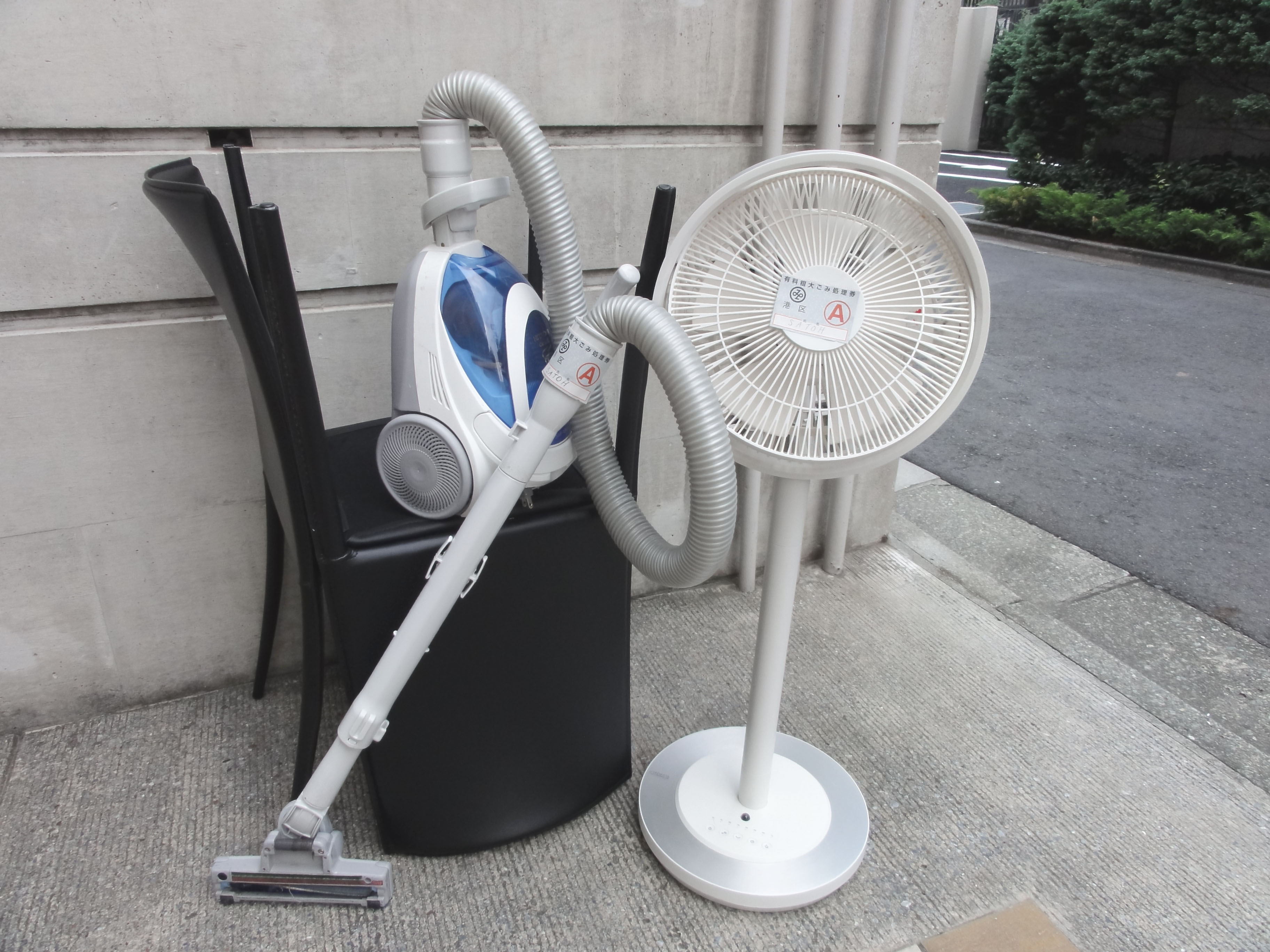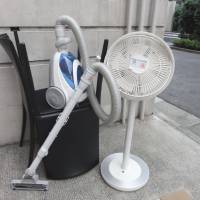Dear Alice,
The other day, on the street outside the building next to mine, I saw a nice looking table with a sodai gomi (oversized garbage) sticker it. When I returned with a tape measure to see if the table would fit in my living room, an elderly woman came out. "You can't take that," she said. "See this sticker? With 'Tanaka' on it? That means Tanaka-san paid to have this table recycled." I countered that Tanaka-san had paid to have the table disposed of and I'm free to take it if I wish. She said, "That's how it used to be. But now we pay for removal so it must be taken by the sodai gomi truck." By this time I had decided I didn't want the table. Tempted though I was to take the table just to spite the old meddler, I left it (and her) on the side of the road. But what the heck's the deal here? Is it ok to take sodai gomi? Or was the old woman right?
Bill A, Yokohama
Dear Bill,
I found your question compelling and not only because I furnished my first apartment in Japan nearly entirely from the trash. That was back in the 1980s, the Golden Age of Trash Picking, when rubbish was less regulated and oversized garbage collection was free. One fateful evening, I bagged two kitchen chairs along with a chest of drawers, a black-and-white TV and a perfectly good vacuum cleaner.
My first thought upon reading your email was that it would have been better for the planet if Tanaka-san's table ended up in your living room rather than as landfill. But I set aside personal sympathies and set out in search of an authoritative answer. Since rules vary by locality, I called the shigen junkan-kyoku (resource recycling department) in Yokohama where you live, and spoke to the official in charge. I'm sorry to tell you your neighbor was absolutely right.
Before I explain why, let me provide background for readers who may have never wrangled with rubbish rules. There's a class of trash in Japan called sodai gomi, which basically includes everything bigger than a breadbox but smaller than an icebox. (Large appliances are a separate category.) A reasonable rule of thumb is if it won't fit into a 45-liter trash bag (30 cm × 30 cm × 50 cm) but you can lift it, it's probably sodai gomi.
Most communities have separate collection for oversized trash and charge for the service. About half use a pre-paid sticker system to collect the fees. Here's how that works. First, you call a special number and request an appointment for trash pickup. In some places you can do this by Internet. In busy periods, you may wait up to a month for pickup. Once your pickup is scheduled, you must go to your government office or an authorized retailer and buy the appropriate amount in sodai gomi shori-ken. These are stickers you apply to your belonging to prove you've paid for its disposal. Where I live, the stickers are sold in convenience stores. On the morning of your appointment — no earlier, please — you put your sodai gomi out in the appointed spot and a truck will come by to collect it.
Now let's return to your question. The official I spoke to stressed that until the moment of collection, the item belongs to the person who arranged for its disposal. "If something's on the street for collection, and you want it, you need to contact the person who put it out and ask for permission to take it. Otherwise it's stealing and someone may report you to the police."
Even if you managed to make off with something before anyone called the cops, unauthorized removal causes problems. "If we get to a pickup place and the item isn't there, we call the owner to see if they forgot to put it out," the official explained. "If an owner decides to give an item away, we ask that they call us back and cancel. Otherwise we waste resources looking for an item that isn't there."
If all this sounds unnecessarily complicated, keep in mind that there are reasons the system evolved as it did. Forty or 50 years ago, Japanese households didn't have as much stuff. What little there was to discard was almost always recycled. But the postwar period of high economic growth brought a wave of consumerism, and garbage disposal began to be a major social problem. This was especially true in cities, where trash piled up on the streets. In Tokyo, garbage pickup was not on a regular schedule and residents had no idea when the trucks might come. Some areas only got pickup once a month.
Then, just before the 1964 Tokyo Olympics, a beautification plan was launched. The city promised regular pickups on a set schedule, and provided households with a standard plastic garbage pail. This helped clean up the streets but didn't address the problem of oversized items that wouldn't fit in the pails. So in 1969, Tokyo began a "station system," creating points in neighborhoods where people could set out oversized items. However, there are traditional times of the year for major clean ups, when Japanese tend to toss out things all at the same time, and in those periods the sites would fill to overflowing. It was often so bad that traffic would be blocked. The solution, reached over a number of years, was the current system of pick-up by reservation. Tokyo introduced fees for oversized garbage collection in 1991.
The fees are generally modest but add up when you've done a major purge. This, and the cumbersome reservation system, seems to provide some incentive to recycle instead. Fortunately, most governments provide alternatives: some set up flea markets at which citizens can sell or give away unneeded items. Others pick up furniture in good condition at no charge and make it available to others for free by lottery.


















With your current subscription plan you can comment on stories. However, before writing your first comment, please create a display name in the Profile section of your subscriber account page.